Taiwan’s AI industry will generate over NT$1 trillion by 2026, according to projections by the National Development Council (NDC), based largely on Taiwan’s dominance in semiconductor manufacturing. But the goal to make Taiwan Asia’s leading AI hub, or “AI island” in the words of President William Lai (賴清德), depends on several factors, not the least of which is to pull 120,000 AI professionals out of a magic hat. By 2028.
The global competition to lead the AI sector is like an AI Olympics. Taiwan possesses a sophisticated semiconductor supply chain, state-of-the-art facilities and advanced infrastructure that make it a premier training ground for the real AI Olympic athletes — tech giants like Nvidia, Advanced Micro Devices Inc (AMD), Google and Microsoft. Many are already here, again largely due to Taiwan’s semiconductor supply chain. However, without skilled trainers and coaches (AI professionals), will these tech giants stay?
If we ignore the political and economic threats from China, Lai’s vision for Taiwan to become the Asian AI hub hinges on three conditions: constructing energy efficient data centers, ensuring a stable and largely renewable energy supply and developing a strong AI talent pool.
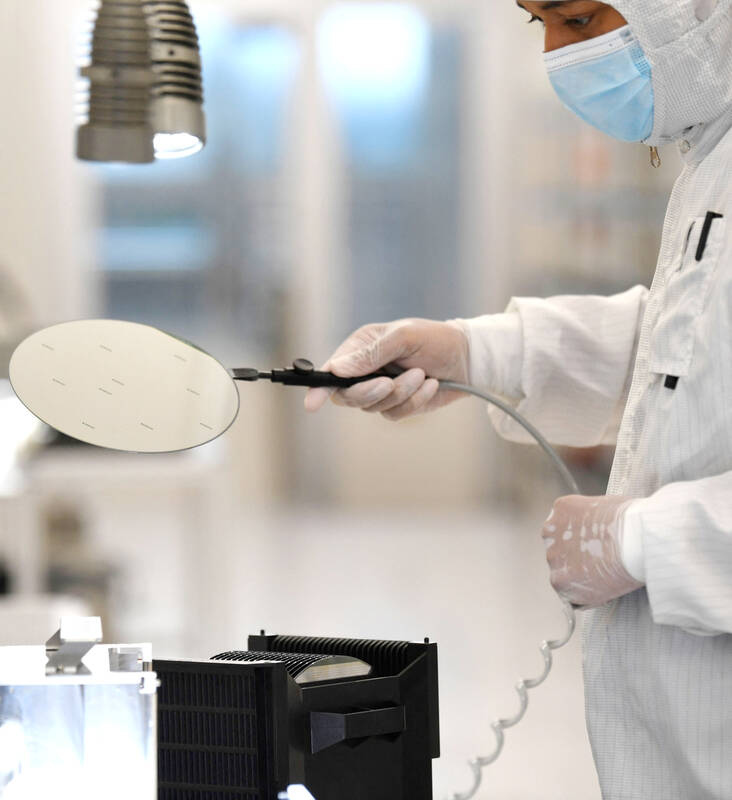
Photo: Reuters
The first is a relatively straightforward engineering challenge. The second and third involve deeper infrastructural issues that may be insurmountable. I previously questioned whether Taiwan has the power to compete in the AI Olympics, but an equally difficult question is whether it has the talent to compete.
It is important to be clear from the start that it will be impossible for Taiwan to develop its own sufficiently large AI workforce. The low birth rate of 5.8 per 1,000 people is shrinking the workforce in an already aging society, and Taiwan’s relatively low salaries for professionals has fueled a brain drain for decades.
This means that even recent efforts by organizations like the Taiwan AI Academy to train more AI specialists and technicians will fall ridiculously short of industry needs. The critical shortfall of AI specialists in fields from machine learning and data science to software development and hardware engineers cuts off AI sector growth at the knees.
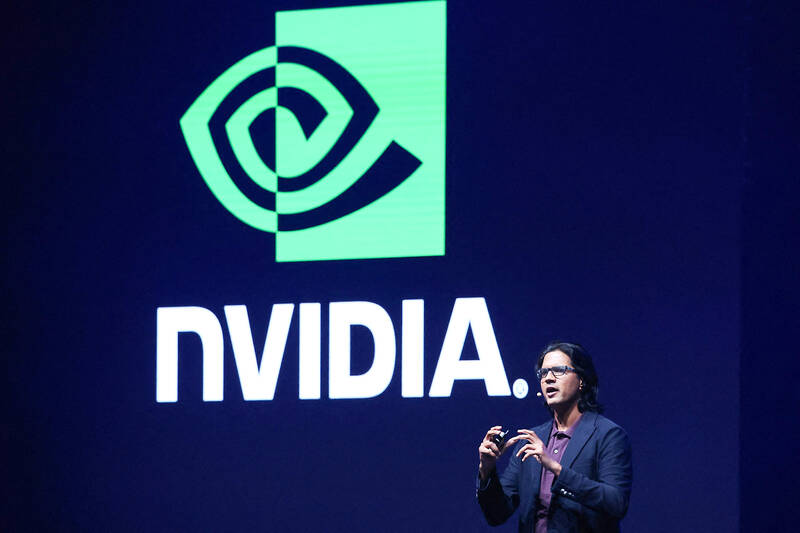
Photo: Reuters
What this means is that recruiting talent from other countries is inescapable. And for this, there are two main targets: 1. AI students, 2. AI professionals.
EDUCATING LOCAL AND FOREIGN TALENT IN TAIWAN
Education is part of the proposed solution. This is a longer-term initiative to increase enrollment of foreign students in AI-related disciplines. The Taiwan AI Academy and university partnerships, such as Chang Gung University’s all-English AI master’s program, focus on industry-relevant training and offer full scholarships and internships with tech giants like Taiwan Semiconductor Manufacturing Co (TSMC) and MediaTek to build and retain talent in Taiwan.
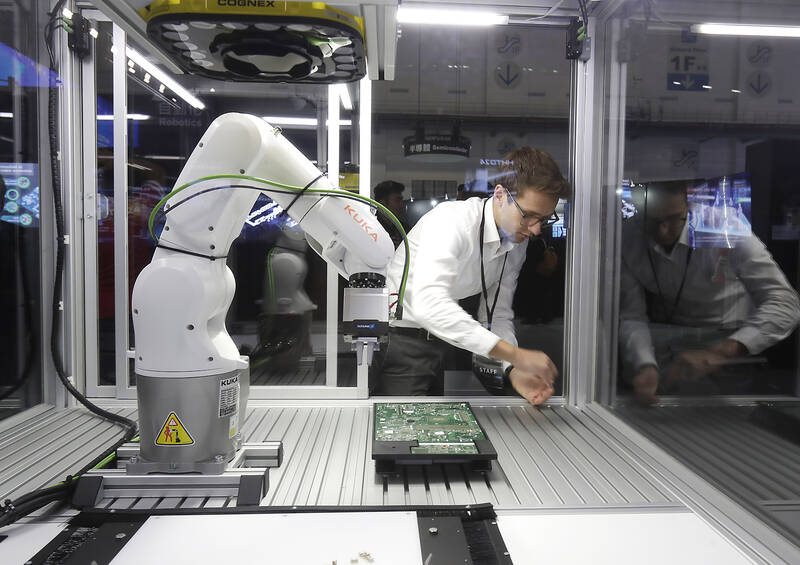
Photo: AP
In theory, this sounds good. In practice, perhaps not. Taiwan does not have a great track record for reforming education, which is one of the nation’s most conservative institutions.
Challenges here will involve the education system’s emphasis on rote learning and the implementation of English as a medium of instruction, for both instructors and Taiwanese students. Efforts like the Bilingual 2030, an initiative that Lai himself introduced in 2014 when he was mayor of Tainan, have so far achieved limited results. For high school graduates, only 20 percent have reached a high intermediate proficiency. The number is probably substantially less for the science and engineering population, who tend to be stronger in math subjects as opposed to language ones. This low English proficiency will impact both foreign students in international programs and foreign workers in international tech companies.
However, even if AI education initiatives meet Taiwan’s AI Academy estimates of 10,000 AI trainees after three years, this number pales in comparison to the actual projection of 120,000 AI professionals by 2028. And in the best case scenario, reforms for hands-on, interdisciplinary learning will take time to show any significant impact.
HIRING FOREIGN TALENT
Recruiting foreign talent is what will make up the remaining talent deficit of over 100,000 AI professionals in the next few years. To attract these international experts, Taiwan has expanded its Gold Card visa program and offers extended work permits and residency options. And according to 104 Job Bank (104人力銀行) statistics, the average salary for AI positions has also risen significantly, from NT$41,000 (US$1,299) to NT$57,000, reflecting a 38 percent increase due to the high demand for skilled professionals. The salaries are likely more for foreign recruited engineers and technical specialists.
Despite these efforts, Taiwan faces intense competition from other tech hubs like Silicon Valley and Singapore, which provide higher salaries and more attractive incentives, making it difficult for Taiwan to draw the necessary talent. Data scientists in Taiwan, for example, can expect to make only a third of their US counterparts’ salary.
To address its talent shortage, Taiwan has asked major tech companies such as Nvidia and AMD to establish R&D centers on the island to bring their own skilled engineers. Minister of Economic Affairs J.W. Kuo (郭智輝) proposed that tech companies looking to establish R&D centers in Taiwan should recruit at least 500 engineers from abroad for every 1,000 they need in Taiwan. However, the global shortage of AI professionals means that even these companies are feeling the recruitment pinch. IT Brief UK reports that 35 percent of global enterprises are suffering from a “critically low supply of AI expertise.”
BETTING ON INDIA
The development council has set its sights on India, which has the second largest AI professional population outside of the US. Taiwan is specifically targeting Bangalore, India’s tech hub, in an effort to attract AI talent through LinkedIn marketing campaigns and partnerships with Indian universities.
However, the demand for AI talent in India is increasing and is expected to grow from 600,000 to 650,000 in 2022 to more than 1.25 million in 2027, according to a report by Deloitte. With India’s AI market growth estimated at 25–35 percent per year, India suffers from a similar demand-supply gap in the talent pool and will need to redouble efforts on upskilling existing talent.
But the reality is that for most Indian engineers who want to leave India, Taiwan will fight a losing battle against countries like the US and Singapore for the best salary, benefits and quality of life.
WHAT TAIWAN SHOULD DO
Taiwan is working to bridge its AI talent gap. But it needs more effort in three areas if it wants to create a real solution instead of the illusion of one.
First, more international training programs are needed. International students will be attracted to educational opportunities in Taiwan with high quality AI programs, scholarships, internships with tech giants like TSMC, Nvidia and Google. Better promotion and visibility can be achieved through collaborations with international research centers in places like the US and India. An influx of international students will also be a life saver for many universities struggling to meet enrollment needs.
Second, Taiwan must offer more competitive salaries, streamlined visa processes like the Gold Card program, citizen rights and international work and living environments that appeal to international AI professionals and to encourage them to stay.
Lastly, a more developed and focused Bilingual 2030 initiative will be critical in creating international environments in colleges, companies, government agencies and in society in general, to make Taiwan more accessible, comfortable and hopefully enjoyable, for both foreign students and workers.
By aligning these efforts, Taiwan can make the first steps toward finding coaches and trainers it needs to compete in the global AI Olympics. And in many ways, the AI labor shortfall is a testing ground for solving Taiwan’s larger — and impending — societal and demographic issues with its rapidly shrinking birth rate and workforce and rapidly aging society.
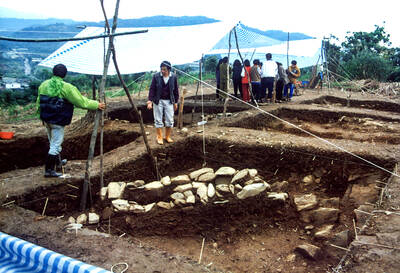
During the Metal Ages, prior to the arrival of the Dutch and Chinese, a great shift took place in indigenous material culture. Glass and agate beads, introduced after 400BC, completely replaced Taiwanese nephrite (jade) as the ornamental materials of choice, anthropologist Liu Jiun-Yu (劉俊昱) of the University of Washington wrote in a 2023 article. He added of the island’s modern indigenous peoples: “They are the descendants of prehistoric Formosans but have no nephrite-using cultures.” Moderns squint at that dynamic era of trade and cultural change through the mutually supporting lenses of later settler-colonialism and imperial power, which treated the indigenous as
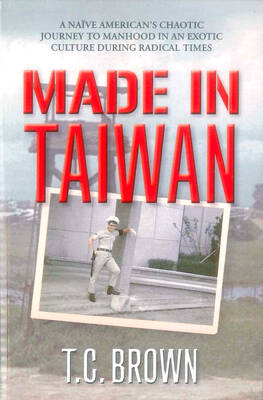
By 1971, heroin and opium use among US troops fighting in Vietnam had reached epidemic proportions, with 42 percent of American servicemen saying they’d tried opioids at least once and around 20 percent claiming some level of addiction, according to the US Department of Defense. Though heroin use by US troops has been little discussed in the context of Taiwan, these and other drugs — produced in part by rogue Chinese Nationalist Party (KMT) armies then in Thailand and Myanmar — also spread to US military bases on the island, where soldiers were often stoned or high. American military policeman

An attempt to promote friendship between Japan and countries in Africa has transformed into a xenophobic row about migration after inaccurate media reports suggested the scheme would lead to a “flood of immigrants.” The controversy erupted after the Japan International Cooperation Agency, or JICA, said this month it had designated four Japanese cities as “Africa hometowns” for partner countries in Africa: Mozambique, Nigeria, Ghana and Tanzania. The program, announced at the end of an international conference on African development in Yokohama, will involve personnel exchanges and events to foster closer ties between the four regional Japanese cities — Imabari, Kisarazu, Sanjo and

The Venice Film Festival kicked off with the world premiere of Paolo Sorrentino’s La Grazia Wednesday night on the Lido. The opening ceremony of the festival also saw Francis Ford Coppola presenting filmmaker Werner Herzog with a lifetime achievement prize. The 82nd edition of the glamorous international film festival is playing host to many Hollywood stars, including George Clooney, Julia Roberts and Dwayne Johnson, and famed auteurs, from Guillermo del Toro to Kathryn Bigelow, who all have films debuting over the next 10 days. The conflict in Gaza has also already been an everpresent topic both outside the festival’s walls, where